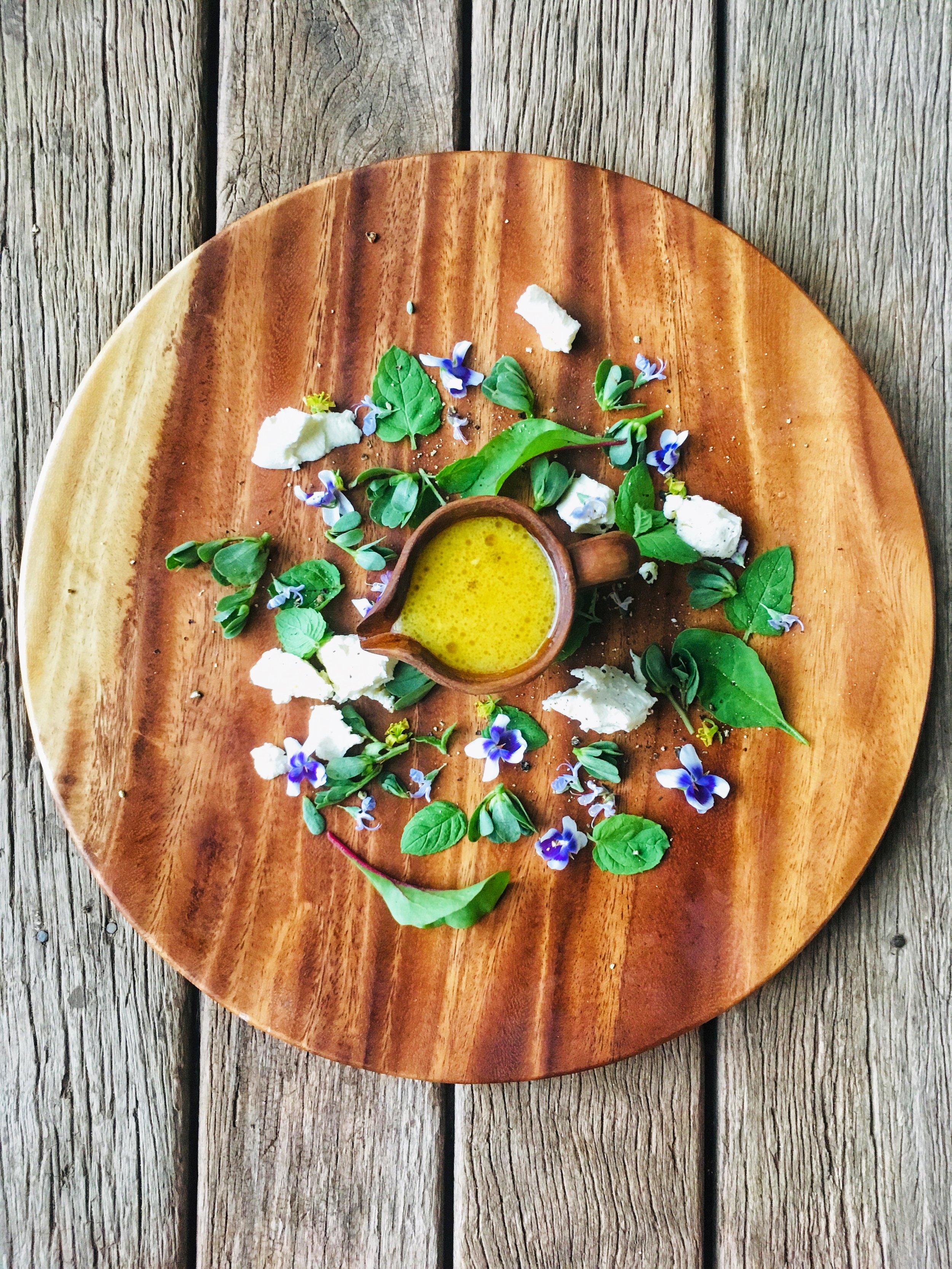Wild purslane salad

Purslane (Portulaca oleracea) popped up all over the back paddock early Autumn (when it was still really quite warm) after the rain. The perfect storm, you might say. You can imagine what I looked like mowing my lawn, veering away from any purslane and fresh dandelion crops I spotted. My view of lawns, and ‘weeds’ in general, has changed a lot since I started foraging.
It is found worldwide, including in most areas of Australia. It can be invasive, particularly enjoying disturbed soil. A potential problem to farmers, but less so to a forager…
Purslane is a succulent. It is full of good things, particularly high in omega 3 fatty acids and potassium. A 100g serving of purslane also provides an astounding 44% of the recommended daily intake of Vitamin A, 35% of Vitamin C and 25% of iron (1). This is one remarkable “weed” that deserves our attention.
The best news about this little power house of a green? It tastes good. Purslane has an excellent flavour profile and texture. Raw, the leaves are slightly crunchy and do not wilt easily. There is a mild lemony flavour, with no bitterness. If you have been wanting to start to forage for edible weeds, I suggest you start here. Easy to find, easy to identify, and satisfying to eat. There are lots of resources available to learn how to identify purslane. See my recommended resources here. Also have a look at the video below for a short and sweet summary.
Wild purslane salad
Gather and rinse a bunch of purslane tips. The young stems are edible too. Whilst you are foraging, pick a handful of edible flowers - rosemary, basil, rocket, and native violet if you have any. Some fresh mint leaves complement the gentle flavours well.
Arrange the purslane and edible flowers on a plate. Scatter a soft cheese - goats cheese or a soft cows curd works well. Crack some black pepper on top.
For the dressing, combine 1 heaped tsp of dijon mustard, 2 tsp honey, 1 tbs of white wine vinegar (or lemon juice) and 2 tbs olive oil. Combine well.
Serve with a slice of buttered sourdough.
Young purslane, sprouting after the rain in late Feb/early March, Northern NSW
References
Uddin, K et al Purslane Weed (Portulaca oleracea): A Prospective Plant Source of Nutrition, Omega-3 Fatty Acid, and Antioxidant Attributes Hindawi Publishing Corporation The Scientific World Journal Volume 2014, Article ID 951019 Accessed online 22nd March 2019 http://downloads.hindawi.com/journals/tswj/2014/951019.pdf
Foraging for Food, A Practical Guide on how to become a forager





